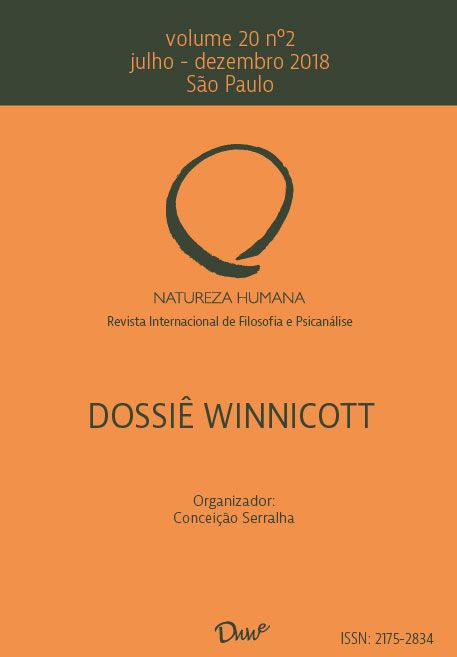Narcissistic transmission and transmission of difference from a case of transmission in a family with triplets
DOI:
https://doi.org/10.59539/2175-2834-v20n2-339Keywords:
psychic transmission; Esther Bick method; triplets; maternity; case study.Abstract
This research was constituted by the accomplishment of a case study. An observation of infants was performed using the Esther Bick Method, where a mother who conceived a multiple pregnancy of triplets by Assisted Reproduction Treatment was followed up. This study aims to demonstrate how the observer could lend herself to projections, welcomingthe anxieties of the mother and others in that environment. This work shows in particular the possibility of preventive action through this method, because the presence of the observer awakens the processes of self-reflection, while at the same time making them continents. In considering these points, this article then demonstrates how, in this case, a form of fragmented psychic transmission has emerged, in which each triplet is the subject of projections and different family identifications.References
Aragão, R. O. (2016). Presença/ausência materna e os processos de subjetivação. Tese de doutorado. Pontifícia Universidade Católica do Rio de Janeiro.
Bick E. (1964). « Remarques sur l’observation de bébés dans la formation des analystes », dans Les écrits de Marthe Harris et d’Esther Bick, Lorient-Larmor Plage, Editions du Hublot.
Bick, E. (1967). Notas sobre La observación de lactantes em la enseñanza Del psicoanálisis. Revista de Psicoanálisis, 24 (1), pp. 97-113. Buenos Aires: Asociación Psicoanalítica Argentina.
Caron, N. & Lopes, R.(2015). When the internal setting becomes more important than the therapist/analyst’s interpretative capacity: extending the infant observation method to the prenatal and perinatal period. Infant Observation, v.18, p.83-95.
Castoriadis-Aulagnier P. (1975). La violence de l’interprétation, Paris, PUF. Ciccone, A. (2014). « Transmission psychique et parentalité », Cliopsy, 11, 17-38.
Eiguer A. (1997). « La part maudite de l’héritage », dans Eiguer A. (dir.) Le générationnel, Paris, Dunod.
Faimberg H. (1993). « Le télescopage de générations », dans Kaës R. (dir.) Transmission de la vie psychique entre générations, Paris, Dunod.
Freud S. (1914). « Pour introduire le narcissisme », dans Freud S., Œuvres Complètes XII. Paris, P.U.F., 2005.
Kaës R. (2009). Les alliances inconscientes, Paris, Dunod.
Konicheckis A. (2008). De génération en génération: la subjectivation et les liens précoces, Paris, PUF.
Meltzer D. et col. (1975). Explorations dans le monde de l’autisme, Paris, Payot, 1984.
Palacio Espasa, F. (2000). « La place de la parentalité dans les processus d’organisation et de désorganisation psychique chez l’enfant », Psychologie clinique et projective, 6, 15-29.
Solis-Ponton, L. (2002). « Dialogue Leticia Solis-Ponton / Serge Lebovici », dans Solis-Ponton L. (éd.) La parentalité. Défi pour le troisième millénaire, Paris, P.U.F., 5-21
Zornig, S. M. A. (2010). « Tornar-se pai, tornar-se mãe: o processo de construção da parentalidade”, Tempo psicanalítico, Rio de Janeiro , juin 2010, 42, 2, 453-470








